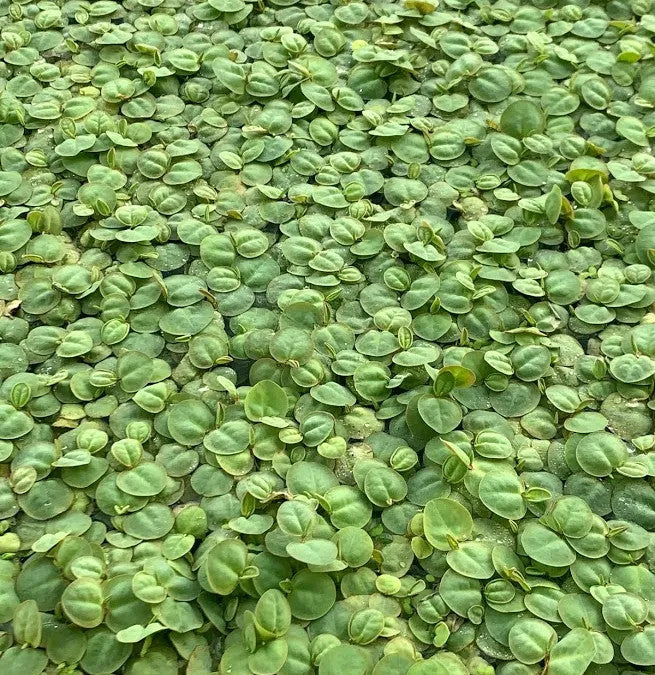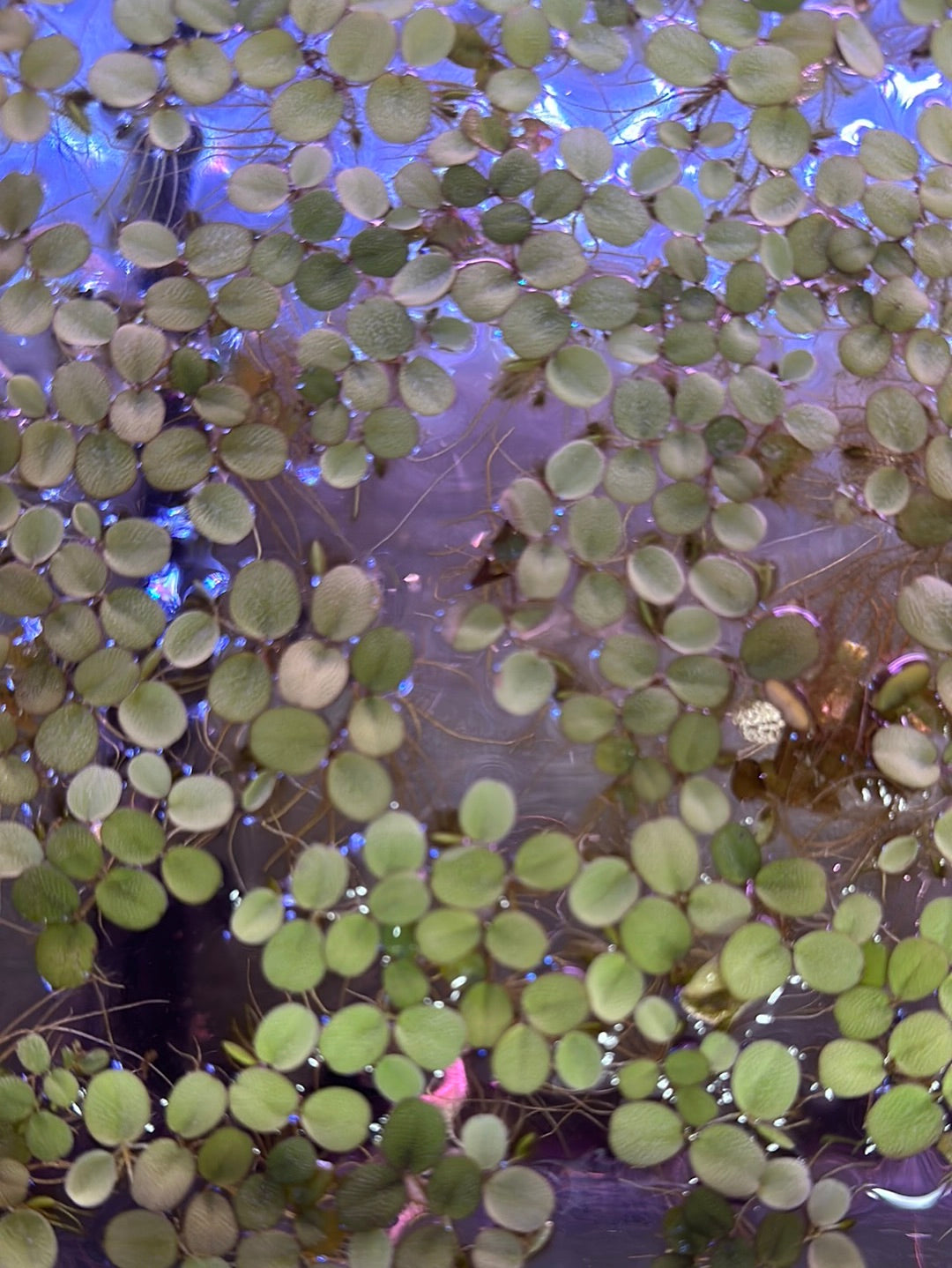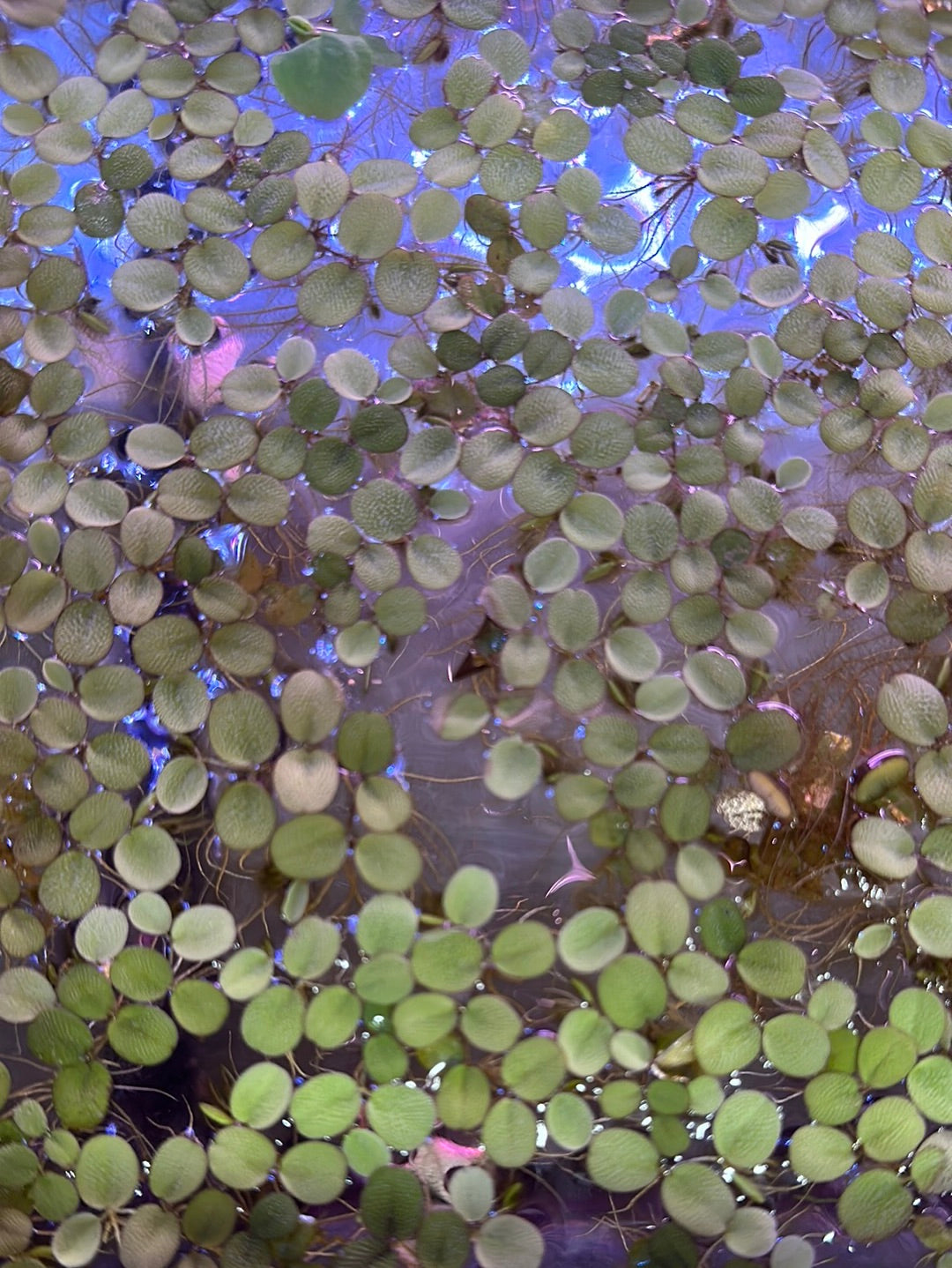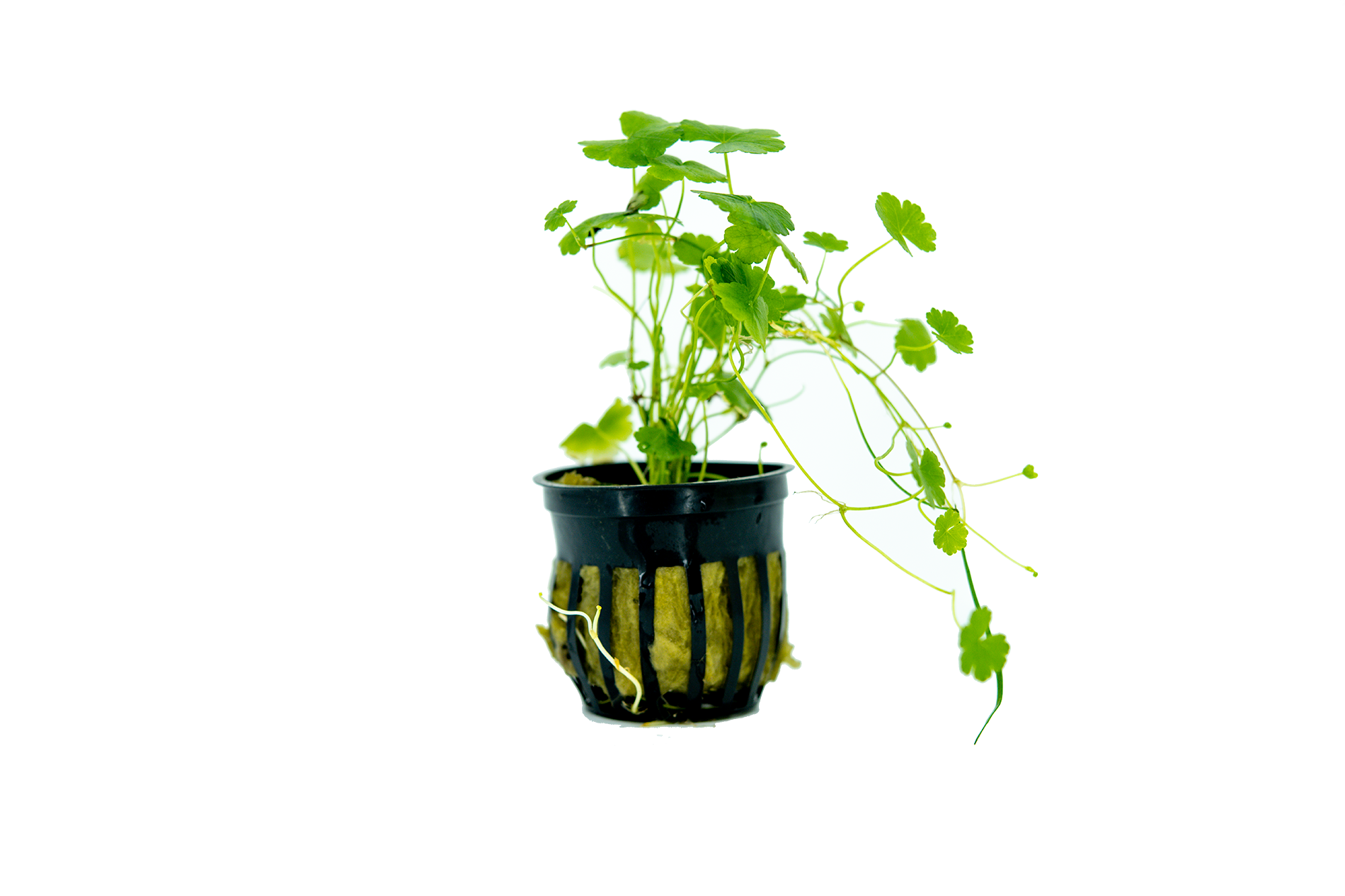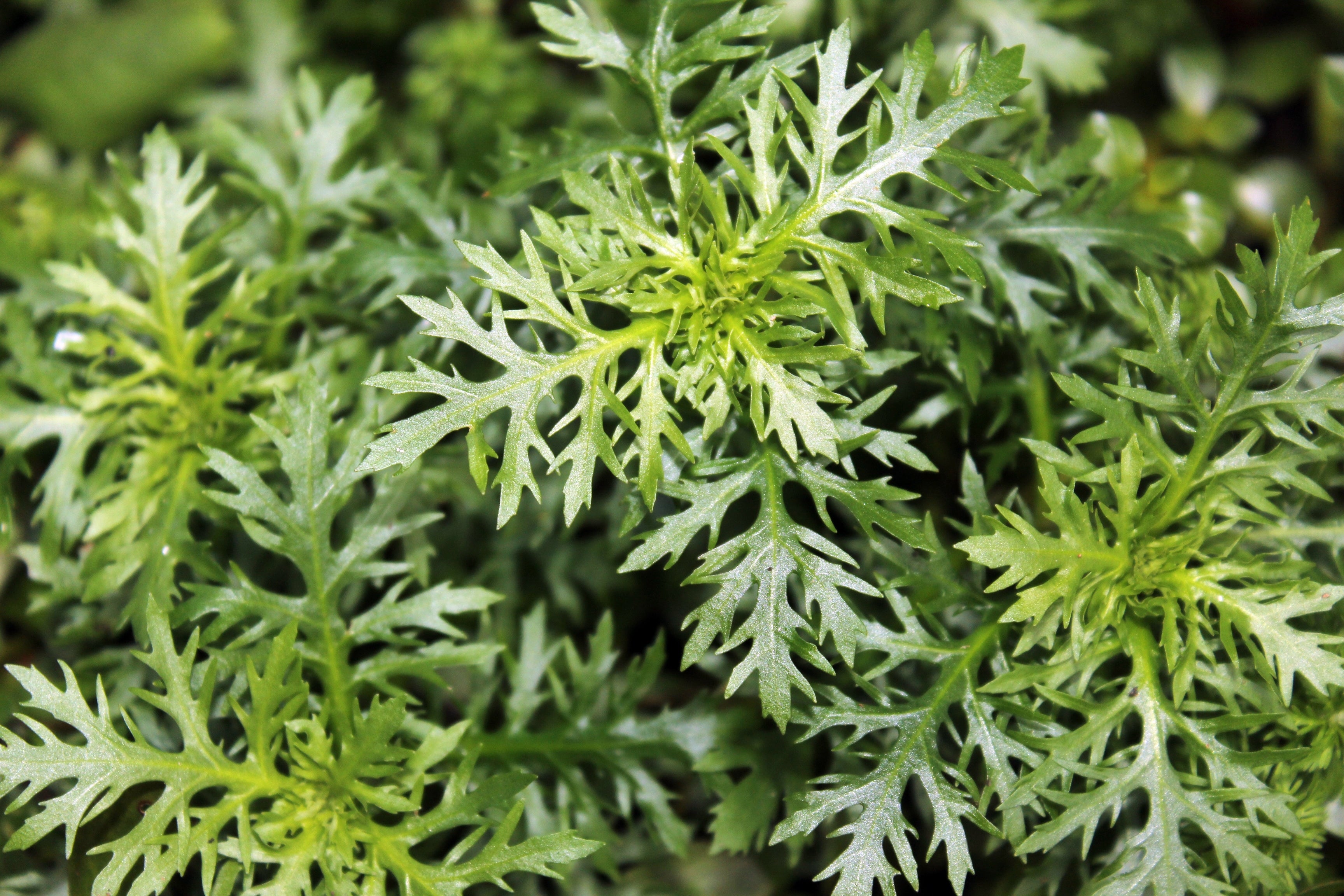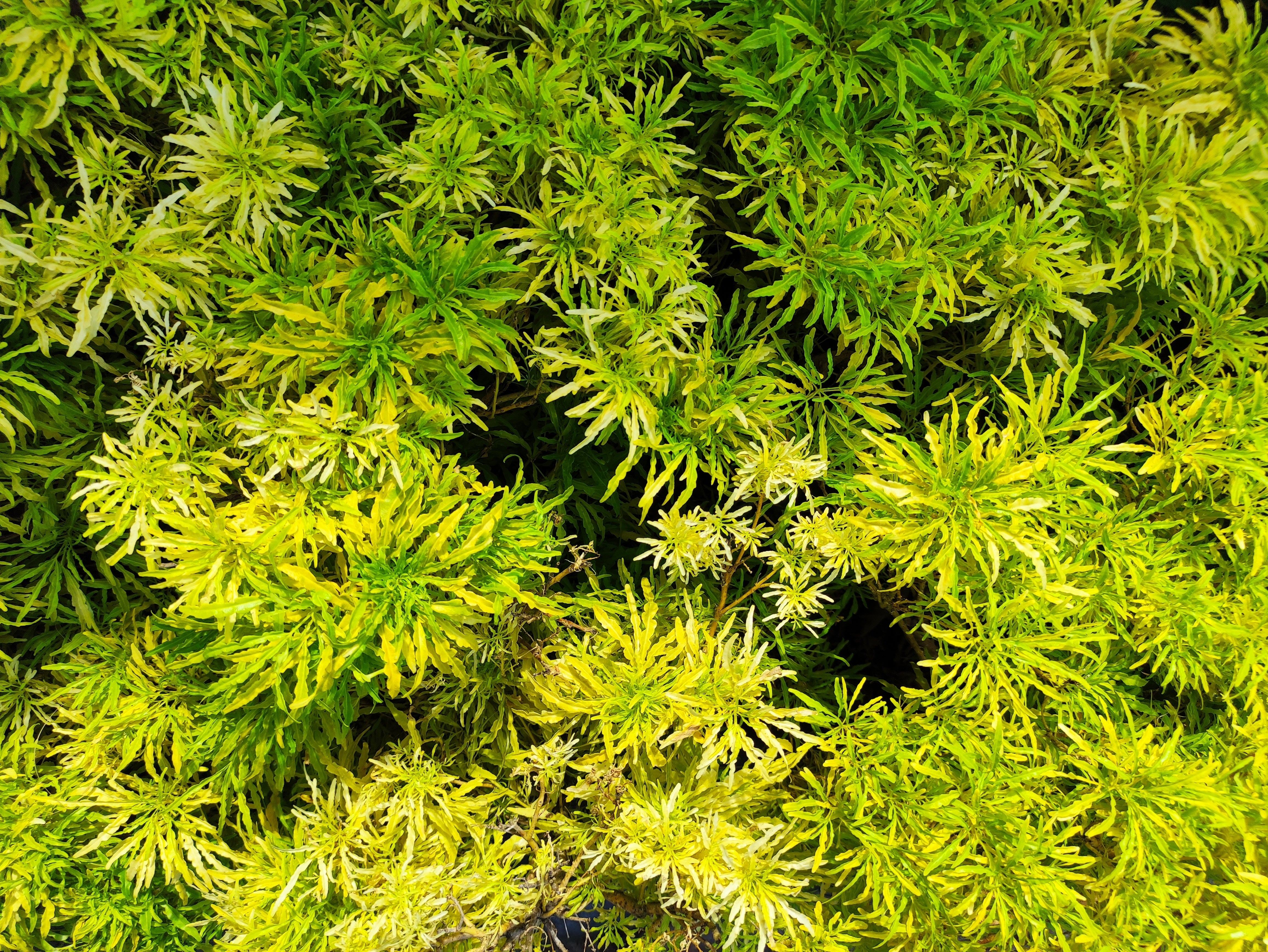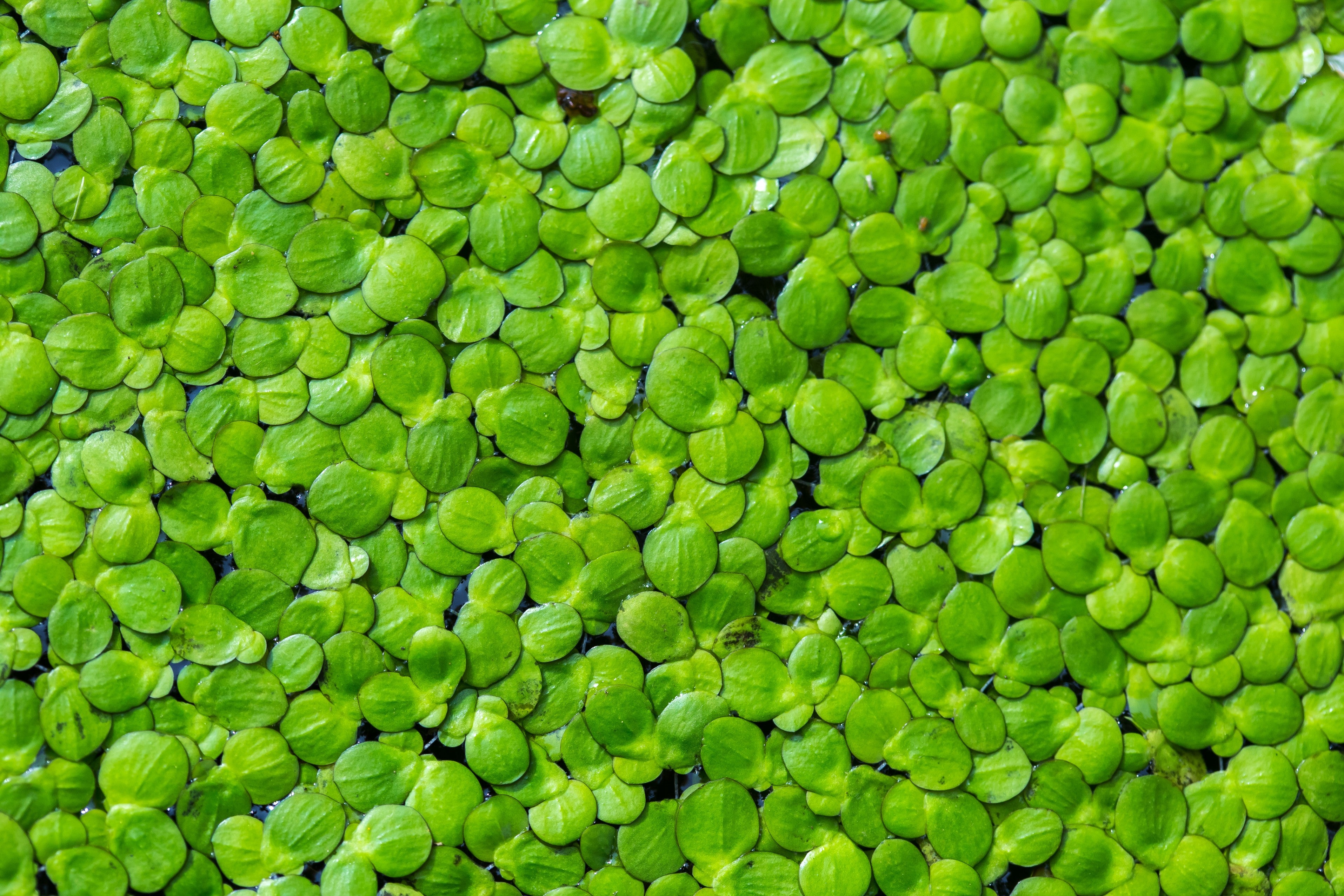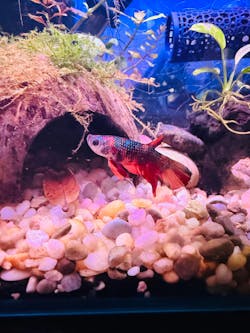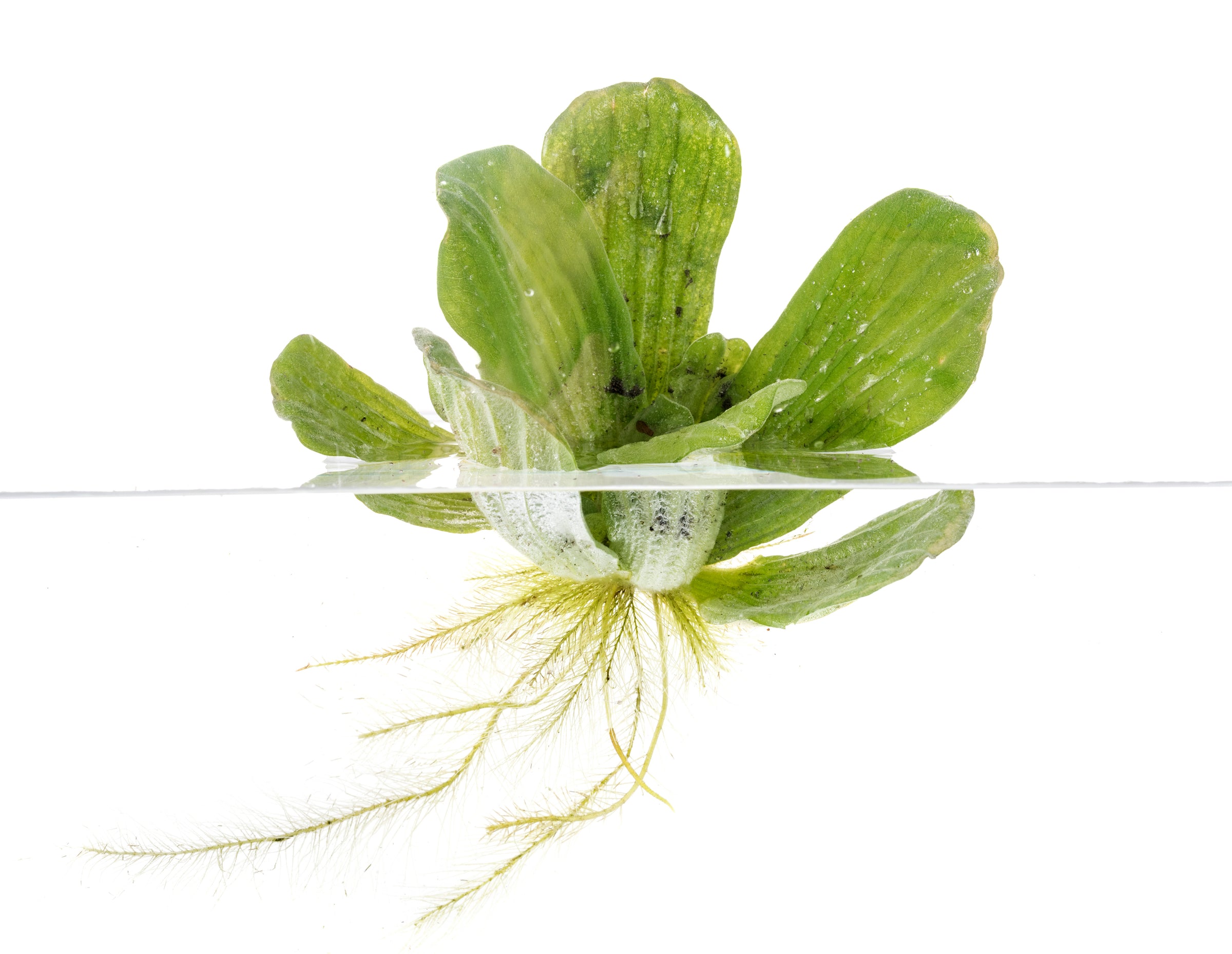
Floating Aquarium Plants
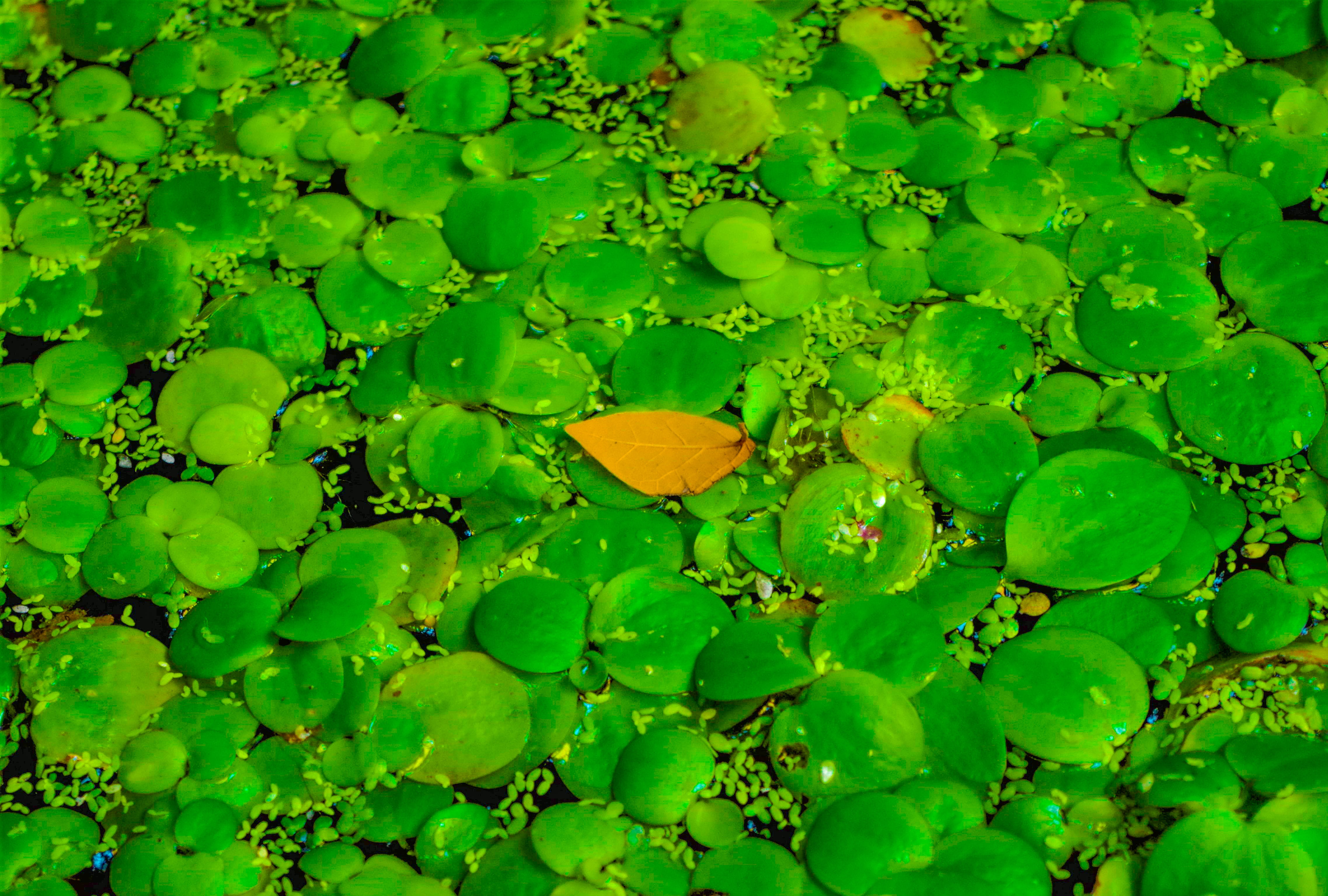
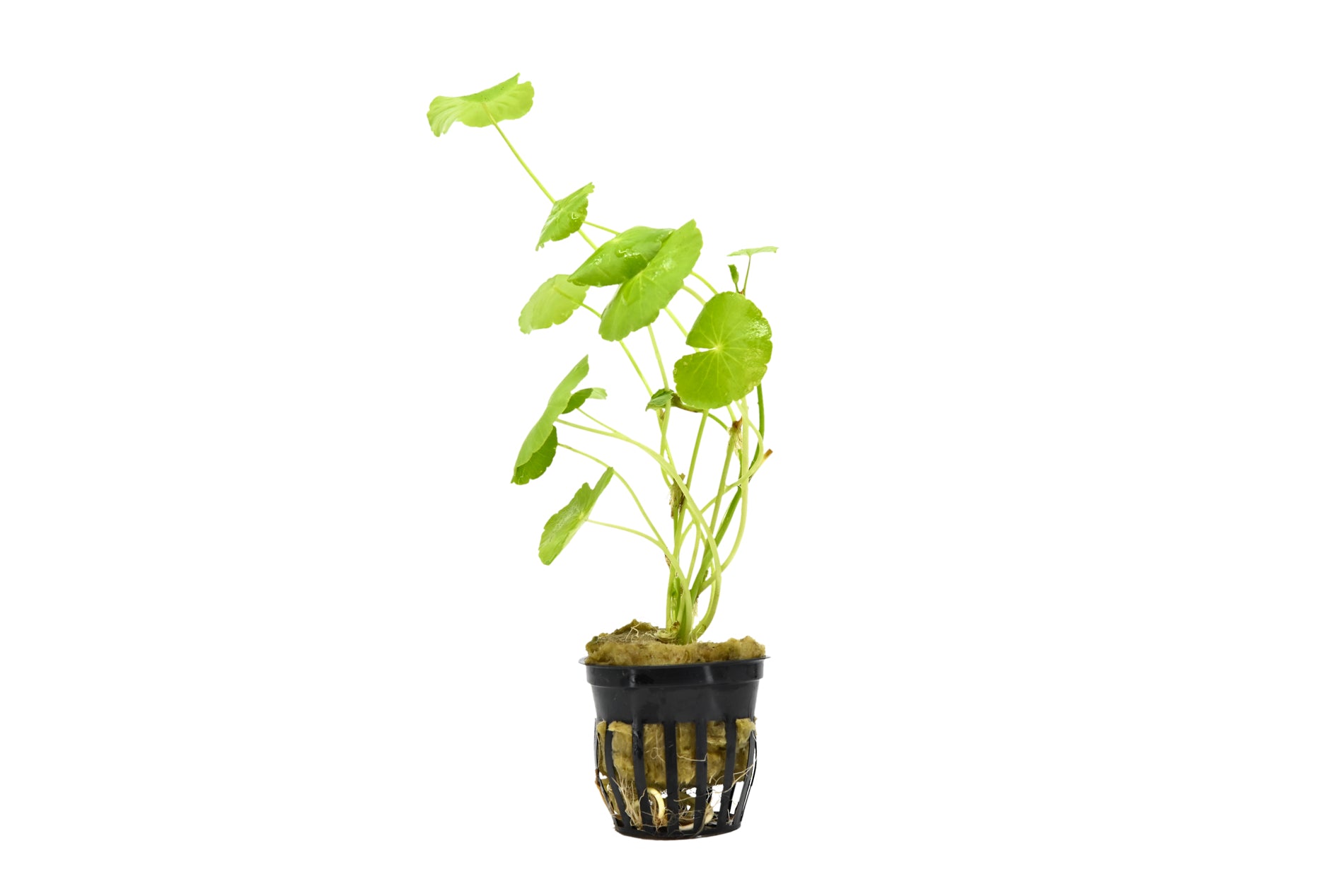
Floating aquarium plants are a type of plant that is adapted to grow in a submerged or partially submerged environment. They are a popular choice among aquarists due to their ability to thrive in a variety of tank setups and their attractive appearance. Floating plants are generally easy to care for and can adapt to a range of lighting and water conditions. These aquatic plants are known to be fast-growing and can help to create a sense of dynamism and movement in your tank. In addition to their aesthetic value, floating plants can also provide several benefits for your freshwater fish and the overall health of your tank. They absorb excess nutrients from the water, helping to reduce the risk of algae blooms and other water quality issues. They also release oxygen into the water, providing a vital source of oxygen for your aquatic pets to breathe. By choosing a selection of floating plants that are suitable for your tank and the specific needs of your fish, you can create a healthy and dynamic habitat for your aquatic pets to enjoy.
Floating Plants Frequently Asked Questions (FAQs)
How do floating plants survive?
Floating plants survive by drawing nutrients directly from the water through their roots, eliminating the need for soil. Positioned on the water’s surface, they access ample sunlight, which is essential for photosynthesis. Their roots absorb key nutrients like nitrogen, phosphates, and other minerals from the water, enabling growth and health. By removing excess nitrogen, floating plants act as natural filters, helping to maintain water quality and get rid of algae in aquarium tanks. This nutrient uptake process not only supports the plants’ survival but also benefits the overall living conditions.
What makes floating plants stay afloat?
Floating plants stay afloat thanks to a specialized tissue called aerenchyma, which is commonly found in aquatic plants. This spongy tissue contains air-filled spaces that provide buoyancy, allowing plants to remain on the water’s surface. Aerenchyma not only helps the plants float but also facilitates the exchange of gasses like oxygen and carbon dioxide, essential for photosynthesis. This adaptation enables floating plants to create environments that thrive in aquatic settings, where access to sunlight and gas exchange are vital for survival.
How to keep floating plants away from filter?
To keep floating plants away from the filter in your aquarium, you can use a few simple techniques when setting up a tank. A floating ring or DIY barrier with airline tubing can help contain plants in a specific area, preventing them from drifting toward the filter intake. Adding a sponge pre-filter over the intake is another effective solution, stopping plants from getting sucked in while allowing water flow. Adjusting the water flow direction or placing a fine mesh guard over the filter intake can also protect the plants. These methods help maintain good water circulation while keeping your floating plants safe.
Discover the Beauty and Benefits of Floating Plants in Your Garden
Enhance the tranquility and beauty of your garden with the addition of floating plants. These resilient yet delicate plants add a unique touch of elegance to any water feature or fish tank. With their ability to float on the surface of the water, they create a stunning visual display that is sure to capture the attention of anyone who enters your outdoor space.
But the benefits of floating aquarium plants go beyond their aesthetics. They play a vital role in maintaining a balanced aquarium ecosystem within your underwater garden. Floating plants provide shade, helping to regulate the temperature of the water and reduce algae growth. They also act as natural filters, absorbing excess nutrients and improving water quality. By incorporating floating plants in your garden, you are not only creating a visually pleasing environment but also promoting a healthier habitat for aquatic life.
Whether you have a small pond or a large, elaborate aquarium, floating plants for fish tanks provide immense value. Let’s dive into the types of floating plants, how they can benefit your fish tank, and tips on incorporating them to create a visually captivating, eco-friendly freshwater aquarium.
Benefits of floating plants for your freshwater aquarium and garden
Floating plants provide numerous advantages that can transform your garden into a vibrant aquarium ecosystem. One of the most significant benefits is their ability to improve water quality. They absorb excess nutrients such as nitrogen and phosphorus, which can accumulate in ponds or aquarium tanks, helping prevent harmful algae blooms. This natural filtering process not only enhances the aesthetic appeal of your water feature but also promotes a balanced aquatic environment.
In addition, live aquarium plants that float provide essential shade, regulating water temperature and reducing algae growth. The shade also benefits fish and other organisms, providing them with a cooler, healthier environment to thrive. Floating plants create hidden areas for small fish and invertebrates, offering shelter from predators, which add an extra layer of safety with your fish tank or garden pond.
Floating plants also contribute to biodiversity by attracting various wildlife species, such as frogs, dragonflies, and birds. Many floating plants produce flowers that attract pollinators, enhancing the ecological richness of your garden for fish tank. This diversity not only adds to the aesthetic appeal but also strengthens the overall health and sustainability of the ecosystem, creating a more resilient environment.
Types of floating plants for aquariums and gardens
Floating plants are a fantastic addition to aquariums, providing aesthetic appeal while improving water quality, offering shade, and creating shelter for fish. Here’s a detailed guide on popular floating plants for aquariums, including their characteristics, benefits, and tips, to help you create a vibrant and balanced aquatic environment.
Duckweed (Lemna minor)Characteristics: Duckweed is a small, fast-growing floating plant that forms a dense green mat on the water’s surface. Each leaf is tiny and smooth, with a minimal root structure.
Benefits: Known for its nutrient absorption properties, duckweed helps reduce toxins and excess light in the tank, which can prevent algae growth. It also provides excellent cover for small fish and fry.
Care Tips: Duckweed grows rapidly and may need regular thinning to prevent overcrowding. In controlled amounts, it can enhance the tank environment, but excessive growth may block too much light from reaching other plants below.
Amazon Frogbit (Limnobium laevigatum)Characteristics: Amazon Frogbit resembles miniature lily pads, with round, thick leaves that float on the surface. Its dangling roots create a beautiful underwater effect, especially in taller tanks.
Benefits: This plant provides shade, which is beneficial for fish that prefer lower light levels. Its roots help absorb nitrates and other waste products, creating a healthier environment for fish.
Care Tips: Amazon Frogbit does best in moderate light. To avoid leaf burn, keep it away from direct lighting sources. Regularly trim its roots to maintain water flow and prevent them from overtaking the tank.
Water Lettuce (Pistia stratiotes)Characteristics: Known for its rosettes of velvety, light-green leaves, water lettuce floats freely and has long, trailing roots that enhance the aesthetics of aquariums.
Benefits: Water lettuce is a powerful nitrate absorber, helping maintain water quality by reducing harmful waste. Its roots provide a natural refuge for shy fish species and fry.
Care tips: This plant requires moderate to high light and warm water temperatures to thrive. It grows quickly, so you may need to thin it periodically to prevent it from blocking too much light.
Water lettuce (Pistia stratiotes) is banned in some states in the United States, and is considered a noxious weed in other states, therefore please research to ensure that you can keep this plant in your states or country.
Salvinia (Salvinia spp.)Characteristics: Salvinia is a small floating fern with round, hairy leaves that float well on the water’s surface. Its roots don’t grow long, making it an ideal plant for smaller tanks.
Benefits: Salvinia is excellent for absorbing excess nutrients, which helps control algae. It provides a soft, natural look and serves as a habitat for small aquatic creatures.
Care Tips: Salvinia prefers moderate to low light and doesn’t require CO2 supplementation, making it a low-maintenance option for aquariums. It should be thinned regularly as it can quickly spread and cover the tank’s surface.
Red Root Floater (Phyllanthus fluitans)Characteristics: This unique floating plant has red-tinted leaves and striking red roots, adding a pop of color to aquariums. The red hue intensifies under high light conditions, creating a beautiful contrast.
Benefits: Red Root Floater enhances the visual appeal of the tank, especially in planted and aquascaped aquariums. It also helps control nutrient levels, which reduces algae growth.
Care Tips: To bring out its red coloration, provide ample lighting and slightly acidic water. Red Root Floater requires a balanced nutrient level to prevent rapid overgrowth. Regular trimming is essential to avoid overcrowding.
How to Choose the Right Floating Plants for Your Aquarium or Garden
Selecting the right floating plants for your aquarium requires thoughtful consideration of your tank’s environment, fish species, lighting, and maintenance preferences. Floating plants not only beautify aquariums but also offer practical benefits such as water purification, providing shade, and creating shelter for fish. Here’s a detailed guide to help you choose the perfect floating plants for your aquarium.
Consider the Needs of Your Fish and Other Aquatic LifeDifferent fish species have varying preferences regarding light, shade, and cover. For example:
- Shade-Loving Fish: Species like bettas and certain types of Catfish enjoy shade and feel more secure when there is surface coverage. Plants like Amazon Frogbit or Water Lettuce are ideal as they provide ample shade without blocking the entire surface.
- Herbivorous Fish: If you have fish that enjoy nibbling on aquatic plants (like Goldfish), choose hardly plants that can withstand grazing, Goldfish will eat Duckweed but not Salvinia.
- Breeding Fish: Floating plants with dense roots, such as Amazon Frogbit and Water Lettuce, are ideal for fish that breed and lay eggs on plants. These roots provide shelter for fry, reducing their risk of being eaten by adult fish.
Some fish are more active and require open spaces, so avoid overly dense floating plant coverage. For these species, choose smaller plants like Red Root Floater, which are easy to manage and keep contained.
Determine the Desired Level of MaintenanceLow Maintenance Options: If you prefer minimal upkeep, choose slower-growing plants like Salvinia, Red Roots Floaters, or Amazon Frogbit. These require less frequent thinning and won’t rapidly take over the tank.
High-Growth Options: For hobbyists who enjoy active tank management, fast-growing plants like Duckweed or Water Lettuce are ideal. These species absorb nutrients quickly, helping to control algae, but they may require frequent thinning to prevent overgrowth.
Trimming and Thinning Needs: All floating plants will eventually need trimming, but fast-growing varieties demand more attention. Be prepared to manage these by removing excess plants or separating clusters to ensure even light distribution and to prevent the plant layer from covering the entire surface.
Evaluate Your Aquarium Lighting ConditionsLow Light Aquariums: Not all floating plants thrive in low light. Choose species like Salvinia or Duckweed, which are adaptable to low to moderate light levels.
Moderate to High Light Aquariums: Higher light levels allow you more options, such as Amazon Frogbit, Water Lettuce, and Red Root Floater. High light will help bring out the vibrant colors in plants like Red Root Floater, creating an attractive display.
Avoiding Leaf Burn: Some floating plants, like Amazon Frogbit, can suffer from leaf burn if exposed to direct, intense light. Place the plants where they receive indirect light or maintain a consistent light distance from the water surface to protect sensitive leaves.
Environmental Conditions: Temperature and pH PreferencesTemperature: Most floating plants thrive in tropical temperatures (68-82ºF/ 20-28ºC), but some are more adaptable. Water Lettuce and Amazon Frogbit prefer warmer waters, while Duckweed and salvinia are more temperature-tolerant.
pH Levels: Generally, floating plants are adaptable to a range of pH levels, though most prefer slightly acidic to neutral conditions (pH 6.0 - 7.5). Avoid drastic pH fluctuations to keep plants healthy.
Recommended Floating Plants for Specific Aquarium Setups
For Freshwater Shrimp and Betta Fish Tanks: Amazon Frogbit and Red Root Floater are ideal as they provide gentle shade and a unique root structure that shrimp and bettas love to explore.
For Planted Tanks with High Nutrients: Water Lettuce and Duckweed are excellent for nutrient absorption, helping control algae in heavily planted tanks.
For Low Light, Low Maintenance Tanks: Salvinia is a resilient choice that doesn’t need much light and requires minimal trimming, making it perfect for low-tech setups.
For Display Tanks with Unique Aesthetics: Red Root Floater adds color and interest, especially when combined with green plants and colorful fish, creating a vibrant focal point.
Steps to Successfully Incorporate Floating Plants in Your Aquarium or Garden
Incorporating floater plants for aquariums or ponds can be a simple yet transformative process:
- Prepare the water feature: start by cleaning your aquarium or pond to remove any debris. For ponds, consider adding aquatic soil to enhance the nutrient content.
- Choose and introduce the plants: Based on your space and needs, select your floating plants. Scatter smaller plants like duckweed across the surface, and place larger plants like water lilies in pots with aquatic soil for stability.
- Monitor Growth: Keep an eye on your water feature to ensure plants are thriving. Adjust spacing as needed to avoid overcrowding, which can affect water quality.
Maintenance Tips for Floating Plants
Maintaining floating plants is crucial for their longevity and the overall health of your water feature. Regular monitoring is essential in the early stages after planting. Check for signs of growth and ensure that the plants are not overcrowding each other. If you notice any plants becoming too dense, use a net or your hands to gently remove some of the excess. This will allow more light and air to reach the water and support the remaining plants’ health.
Feeding your floating plants can also enhance their growth. Use a balanced aquatic fertilizer specifically designed for water plants. Apply it sparingly, as too many nutrients can lead to algae blooms, negating the benefits of the floating plants. Additionally, observe the water quality regularly. Testing kits can help you monitor nutrient levels, pH, and clarity. If the water becomes murky or overly nutrient-rich, consider adding more floating plants to act as a natural filter or adjusting your feeding schedule.
Seasonal changes may also require adjustments in care. In colder climates, some floating plants may need to be removed before the first frost, while others can survive the winter. Research the particular needs of your chosen plants to determine the best seasonal care practices. During the growing season, ensure that your plants receive adequate sunlight and water circulation. With consistent maintenance, your floating plants will thrive and contribute positively to your garden's ecosystem.
Common Problems and Troubleshooting for Floating Plants
Floating plants are generally low-maintenance, but they can encounter issues:
Yellowing leavesYellowing Leaves on floating plants often indicate nutrient deficiencies, especially in nitrogen or iron, or inadequate lighting. When plants don’t get enough nutrients, they can’t produce chlorophyll efficiently, leading to pale or yellow leaves.
To resolve this issue, add a balanced liquid fertilizer that contains essential micronutrients like Iron and magnesium, which supports vibrant leaf color. Additionally, make sure the plants are receiving sufficient light, as low light can also cause yellowing. Adjusting the light intensity or duration can help promote healthy, green foliage.
Excessive Overgrowth
Some floating plants, such as Duckweed, are fast growers and can quickly cover the aquarium’s surface, blocking light for the aquatic plant underneath to get light and potentially disrupting oxygen exchange. While they are excellent for water quality, their rapid growth requires regular maintenance.
To manage overgrowth, thin out the plants periodically, aiming to cover only 25-50% of the water surface. This allows enough light to reach other plants below, ensuring a balanced environment for all aquarium inhabitants.
Algae Growth on Plants
Algae growth on floating plants is often a result of excessive light and nutrient build-up in the water, lack of maintenance. Algae can spread quickly, covering leaves and blocking light, which hampers plant health.
To reduce algae, try lowering the light duration or intensity and check nutrient levels in the water. Conduct weekly 30% water changes to dilute excess nutrients, and consider controlling feeding to prevent nutrient buildup. These steps help create conditions less favorable for algae and keep your floating plants healthier.
Plants Sinking or Getting Waterlogged
When floating plants become waterlogged and start to sink, it usually means they have damaged leaves or poor health, often due to nutrient deficiencies or physical wear. Sinking plants can decay quickly, affecting water quality.
To fix this, carefully remove waterlogged plants and trim away any damaged parts. Supplementing with a balanced aquarium fertilizer can help strengthen the remaining plants, ensuring they remain buoyant and resilient.
Creative Ways to Use Floating Plants in Your Garden Design
Integrating floating plants into your garden design can unleash your creativity and enhance the overall aesthetics of your outdoor space. One popular method is to create a layered look by combining floating plants with submerged and emergent plants. This approach allows for a diverse range of textures and colors, providing visual interest at different levels of the water feature. For instance, pairing vibrant water lilies with lush green duckweed can create a stunning contrast while promoting a balanced community.
Another creative idea is to use floating plants as natural dividers within larger ponds. By clustering different types of floating plants, you can define spaces within your water feature, making it visually appealing while also serving practical purposes. This can create cozy areas for fish to hide or spaces for pollinators to visit. Using plants with varying heights and shades can add depth and dimension to your garden, making it more inviting.
Finally, consider incorporating floating plants into your overall aquarium landscape design. Use them to frame pathways, create focal points, or enhance seating areas near water features. By strategically placing floating plants around your garden, you can create a harmonious blend of land and water, drawing the eye and encouraging exploration. Whether creating a tranquil retreat or a lively gathering place, floating plants can play a pivotal role in your garden's design.
Enrich Your Aquarium or Garden with Floating Plants
Incorporating floating plants in your garden or aquarium goes beyond beauty – it contributes to a healthier ecosystem. With their natural filtering abilities, temperature regulation, and aesthetic appeal, floating plants can elevate your water feature, making it a stunning sanctuary for both nature and relaxation.
By exploring options like rooted and floating plant aquariums, you can find the perfect balance that resonates with your style and environmental goals. Embrace the beauty and benefits of floating plants and transform your garden or fish tank into a vibrant, harmonious space that nurtures both ecological health and aesthetic allure.
For more ideas on how to decorate your aquarium with floating plants, check out on Decorating Your Aquarium Tank with These Top 10 Floating Plants.




















